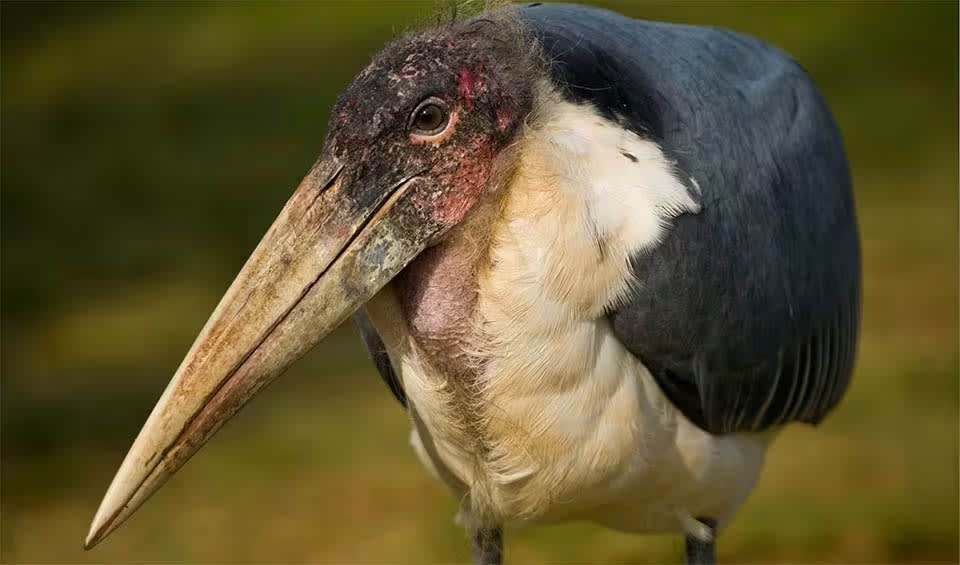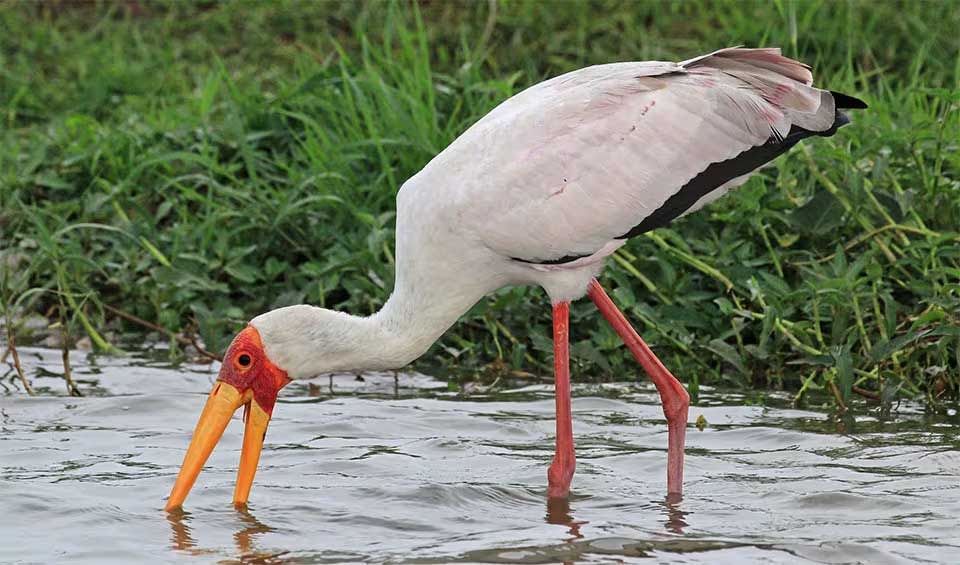Leptoptilos – Adjutant birds
Massive storks with bare heads like vultures
These birds are distributed across Southeast Asia, where two species are found, and Africa, home to one species. Their fossil records trace back to the Pliocene epoch, indicating a long-standing presence on the planet and suggesting a successful adaptation over millions of years.
Adjutant storks are large birds with a distinctive lack of contour feathering on their head and neck, giving them a somewhat prehistoric and bare-skinned look. This feature, along with their massive dagger-like bills, is an adaptation linked to their scavenging habits. These storks feed on carrion, animal remains, and waste from human settlements, often leading them to rubbish dumps in search of food. This diet places them as important cleaners in their ecosystems, helping prevent disease spread from decaying matter.
The greater adjutant is notable for its large inflatable throat pouch. These pouches play a crucial role during the breeding season, as they are used for display and sound production. The pouches can be inflated during courtship to make loud, low-pitched calls that carry across long distances, attracting mates and asserting territorial claims.
Adjutant storks are colonial nesters, often building large stick nests in trees or on cliffs, where they breed in groups. Their social structure during the breeding season is complex, involving a variety of vocalizations, from mooing to squealing, which are characteristic of these birds.
When in flight, adjutant storks exhibit a behavior that is adaptive for their large size. They retract their necks, much like herons, which supports the weight of their heavy bills and heads and aids in aerodynamic efficiency. This adaptation is essential for their long-distance dispersal flights, which can span several miles.
Sadly, the Asian species of Adjutant storks are facing rapid declines due to anthropogenic pressures. Habitat loss, pollution, and hunting have all contributed to the reduction of their populations. The Greater Adjutant, in particular, has seen its numbers dwindle, leading to its classification as endangered.
Species in this genus
Greater adjutant
One of the rarest storks in the world
Lesser adjutant
Nicknamed the “undertaker bird” because of its bald head and hunched stance, as if dressed in dark mourning clothe
Marabou stork
This Nature’s cleaners are the largest & heaviest living stork
Yellow-billed stork
As the name suggests, this whitish stork has a bright red face and a distinctively long yellow bill





